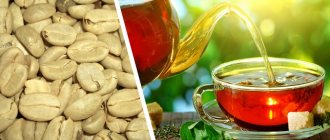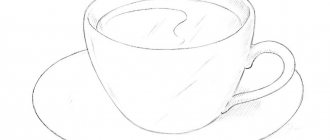There are very interesting recipes in Western sources. Russian-language media and bloggers often like to translate and publish them. And the chefs themselves do not pass by an interesting pudding or baked turkey. It’s just that the ingredients in these recipes are given in measurements that are unusual for us. European and American chefs use completely different measures, where the glasses we are used to are replaced with cups that have a completely different volume.
Since American and English recipes are the most popular among us (it is more convenient to read sources in English), we talk about the measures of weight and volume in them.
Meaning and origin of the word "mug"
According to information from explanatory dictionaries, a mug is a generalized name for kitchen and tableware that is used for eating, as well as for storing and containing a wide variety of drinks. As a rule, dishes made of glass or ceramics have thick walls and a handle in the form of a bow on the side surface. This design allows you to pour both cold and hot drinks into it.
As for the shape, the vessel most often resembles a cylinder or a truncated cone, but mugs are also available in spherical and ellipsoidal shapes, as well as in the form of various figures (animals, objects, etc.).
Depending on the manufacturer, the capacity of the cutlery varies from 230 to 500 milliliters . However, there are also options that can hold liquid up to one liter. The average capacity of mugs is 250 ml .
The word itself has quite an old origin and dates back to the 15th century and was borrowed from the Polish language, from which “kruz” means jug. In such a vessel, the upper diameter is larger than the lower one, and it itself was made of clay.
The secret of a cut glass
Already in the Soviet Union, the choice of glassware for drinking was huge: volumes of 100, 150, 200, 250, 350 milliliters could be found on sale. They also differed in the number of edges. However, quite quickly a two-hundred-milliliter faceted glass with six sides began to be considered the standard. Its volume made it possible to “think” a half-liter bottle of vodka for exactly three people, pouring it to the rim. If the “thinking” ones were not rich, and they only had one glass, everyone could be sure that their comrades had not deprived him in their favor.
Gradually, this “measure of volume” went beyond drinking alcohol. Grandmothers used these glasses to measure out seeds and berries at markets, and vending machines and barmaids poured sparkling water into them.
Thus, if in a recipe you see an indication of 1 glass, this means the same faceted glass of 200 milliliters.
Standard mug: how many ml is in it?
Since the industry has reached a high level of development, this tableware can be made from:
- Glass;
- Ceramics;
- Metal;
- Trees;
- Porcelain;
- Plastic.
The choice of kitchen utensils will primarily depend on its intended purpose. But it is worth considering that a standard mug holds 250 milliliters , regardless of what material it is made of.
For example, plastic and metal mugs are most often used in tourism, during travel or long trips. They differ from others in their low weight and good impact resistance, and are not subject to deformation. The volume of such products averages 250-300 ml . On a hike or on vacation, you don’t have to worry about your mug breaking.
Tableware made from glass or ceramics mainly found its use in home use. Every housewife wants to have beautiful mugs of original shape and design in her kitchen.
Cheap options involve plain-colored dishes, while more expensive ones are represented by mugs with drawings and prints or hand-painted ones. Since such dishes are used in everyday life for drinking tea or other drinks, for example, juices or carbonated sweet water, buyers try to choose a large-capacity mug. Accordingly, manufacturers focus on producing products from 250 to 420 milliliters.
Porcelain mugs are considered the most expensive. They often find their use in expensive restaurants or other establishments. The same housewives who have such items in their dining arsenal use them when receiving dear guests, and some simply collect them.
Porcelain products, as a rule, are decorated with paintings, beautiful designs and have various decors, and their capacity is often no more than 200 ml.
What is the 1 pint measurement needed for?
Due to the fact that a certain metric system has now been introduced, this unit of volume is used only in the UK. And only to determine the volume of beer or cider in bars. Surely, a person who watches a lot of films has sometimes heard the words “beer” and “pint” in the same sentence from the lips of cultured characters relaxing in a pub.
Delicious recipe! Sweet donuts with kefir
A small but important clarification: in the States the word is spelled pint. And the abbreviation pts on the measuring cup (its decoding is unknown) suggests an English pint, which is equal to almost 570 ml. So you will only need it if you need to measure exactly that amount of product. And that’s unlikely, since it’s easier to use scales or other divisions on measuring dishes.
Thermal mugs: at the peak of popularity
Thermal mugs deserve special attention . This dish is a small thermos, the inner walls of which are made of ceramic metal. From the outside, this product resembles a tall metal glass with a lid and a small hole for drinking. Initially, such mugs were used by tourists or military personnel. The storage temperature for drinks can reach up to 8 hours. The capacity of such products ranges from 250 ml to 1 liter.
Now the scope of their application has grown significantly. Mini thermoses are very popular among office workers who spend almost the entire working day at the desk and computer, and do not always have time for drinking tea.
In addition to such thermoses, very common are mugs, the outer side of which can change its color depending on the temperature of the liquid inside. When you pour hot tea or coffee, a design or pattern appears on the mug. As it cools down, the image gradually disappears.
Tableware that combines the functions of a blender and a glass is called blender mugs. Such devices have a small electric motor powered by batteries or batteries, and can easily prepare cocktails or other drinks for you. True, they can hold no more than 350 ml of liquid , since part of the space in the case is occupied by the motor itself.
Dry and bulk substances
If you decide to cook baked goods or desserts, you will definitely need sugar and flour. To prepare side dishes and porridges, you need to measure out cereals: rice, buckwheat, semolina and oatmeal. Let's even consider such exotic options when we need half a glass of salt or powdered sugar. If there is 250 g of granulated sugar in a full faceted glass, then in a half share - 125 g. Salt and cereals, such as buckwheat and rice, are measured in the same way.
Flour weighs lighter, then 1/2 cup is how much? We answer: 90 grams, since the whole glass contains only 180 g. Sifted flour will weigh 75 g. Powdered sugar is more weightless, so half of the contents will be only 60 g. For example, crushed nuts with a volume of half a glass weigh 50 g, and ground to flour - 40 g.
Where else are these containers used?
In addition to their intended purpose, mugs are also used in the preparation of various dishes as measuring cups or for storing flour, sugar or cereals. Many housewives have decorative vessels in their kitchens in which they hold cutlery. Speaking about this use of mugs, it is worth noting that often their capacity is at least 500 ml . They can be decorated with decorative elements and are not designed for storing liquids. There are also products that can easily be put on fire without fear of deformation.
Liter containers can be used as flower pots or vases. The use of such metal or glass mugs depends on your imagination and imagination. True, the price of such items can be much higher than their counterparts for their intended purpose. Therefore, if you have an old metal or glass mug lying around, do not rush to get rid of it. Perhaps it will fit perfectly into the interior of the kitchen or living room.
In general, we can say that the direct purpose and relevance of use will be directly proportional to how many ml are in the mug, and the second criterion for choosing a given product will be the material and color. The price will also be important, because for some this type of dishware is a trifle, while others like to sit down in bad weather with their favorite mug and an interesting book, covered with a warm blanket.
Converting US Weights and Measures to Metric (and a few other useful tables)
This material has been prepared specifically for those who like to experiment and cook using recipes from American books or blogs. To ensure that your sweets are always a success, we will help you understand the system of weights and measures in which American housewives are accustomed to working, as well as the conventions they use.
Symbol table
| Conventions (in American recipes) | Translation |
| C. = cup | cup |
| t. = tsp. = teaspoon | tea spoon |
| T. = tbsp. = tablespoon | tablespoon |
| g. = gr = gram | gram |
| kg. = kilogram | kilogram |
| F = Fahrenheit | degrees Fahrenheit |
Metric Conversion Chart for Basic Ingredients
| Oil | ||
| 8 American tablespoons (1 pack (1 Stick)) | 110 gr | |
| Flour | ||
| 1 American cup | 150 gr | |
| Sugar | ||
| 1 American cup | 225 gr | |
Table of temperature conditions (some values are rounded within 3 degrees Celsius)
| F | WITH |
| 275 | 135 |
| 300 | 150 |
| 325 | 160 |
| 350 | 175 |
| 375 | 190 |
| 400 | 205 |
| 425 | 220 |
| 450 | 230 |
| 475 | 245 |
The following table provides data for converting liquid volumes
| Volume conversion (data in table is valid for liquids only) | |
| Specified quantity | Metric equivalent |
| 1 teaspoon | 5 ml |
| 1 tablespoon or 1/2 fl oz | 15 ml |
| 1 fl oz or 1/8 cup | 30 ml |
| 1/4 cup or 2 fl oz | 60 ml |
| 1/3 cup | 80 ml |
| 1/2 cup or 4 fl oz | 120 ml |
| 2/3 cup | 160 ml |
| 3/4 cup or 6 fl oz | 180 ml |
| 1 cup or 8 fluid ounces or half a pint | 240 ml |
| 1 1/2 cups or 12 fl oz | 350 ml |
| 2 cups or 1 pint or 16 fl oz | 475 ml |
| 3 cups or 1 1/2 pints | 700 ml |
| 4 cups or 2 pints or 1 quart | 950 ml |
| 4 quarts or 1 gallon | 3.8 l |
| Note: In cases where there is no need for high data accuracy, you can round the values as follows. 1 cup = 250 ml 1 pint = 500 ml 1 quart = 1 L 1 gallon = 4 L | |
Weight conversion table
With this table you can convert ounces to grams. But keep in mind that the ounces in this table are different from those in the table for liquid products.
| Weight conversion | |
| Specified quantity | Metric equivalent |
| 1 oz | 28 g |
| 4 oz or 1/4 lb | 113 g |
| 1/3 lb | 150 gr |
| 8 ounces or 1/2 pound | 230 gr |
| 2/3 lb | 300 gr |
| 12 oz or 3/4 lb | 340 gr |
| 1 pound or 16 ounces | 450 gr |
| 2 pounds | 900 gr |
Other (non-liquid) ingredients
The volume of non-liquid ingredients specified in American recipes (if it is more than 2 tablespoons or 1 fluid ounce) is calculated using the following table.
| Ingredient weights in grams | |||||||
| Ingredient | 1 cup | 3/4 cup | 2/3 cup | 1/2 cup | 1/3 cup | 1/4 cup | 2 tbsp. |
| Wheat flour | 120 gr | 90 gr | 80 gr | 60 gr | 40 gr | 30 gr | 15 g |
| Sifted wheat flour | 110 gr | 80 gr | 70 gr | 55 gr | 35 gr | 27 g | 13 g |
| Granulated sugar (cane) | 200 gr | 150 gr | 130 gr | 100 gr | 65 gr | 50 gr | 25 gr |
| Confectionery sugar (cane) | 100 gr | 75 gr | 70 gr | 50 gr | 35 gr | 25 gr | 13 g |
| Brown sugar | 180 gr | 135 gr | 120 gr | 90 gr | 60 gr | 45 gr | 23 g |
| Corn flour | 160 gr | 120 gr | 100 gr | 80 gr | 50 gr | 40 gr | 20 gr |
| Corn starch | 120 gr | 90 gr | 80 gr | 60 gr | 40 gr | 30 gr | 15 g |
| Raw oatmeal | 90 gr | 65 gr | 60 gr | 45 gr | 30 gr | 22 gr | 11 g |
| Salt (table) | 300 gr | 230 gr | 200 gr | 150 gr | 100 gr | 75 gr | 40 gr |
| Oil | 240 gr | 180 gr | 160 gr | 120 gr | 80 gr | 60 gr | 30 gr |
| Chopped fruit | 150 gr | 110 gr | 100 gr | 75 gr | 50 gr | 40 gr | 20 gr |
| Nuts (chopped) | 150 gr | 110 gr | 100 gr | 75 gr | 50 gr | 40 gr | 20 gr |
| Nuts (crushed) | 120 gr | 90 gr | 80 gr | 60 gr | 40 gr | 30 gr | 15 g |
| Bread crumbs (fresh) | 60 gr | 45 gr | 40 gr | 30 gr | 20 gr | 15 g | 8 g |
| Bread crumbs (dry) | 150 gr | 110 gr | 100 gr | 75 gr | 50 gr | 40 gr | 20 gr |
| Parmesan cheese (grated) | 90 gr | 65 gr | 60 gr | 45 gr | 30 gr | 22 gr | 11 g |
Table of fat percentage in cream
| Cream | |
| Cream type | Fat content |
| Jersey (English version) | 60% |
| Double (English version) | 48% |
| Heavy (American version) | 40% |
| Whipping | 30-60% |
| Single (English) or Light or Table (American) | 18% |
| Half and Half (American version) | 10-18% |
| Half Cream (English version) | 12% |
Tags: table, theory
Non-traditional application
Using a glass, you can also measure out those foods that we usually don’t put in it. For example, butter, which takes up half the container, weighs 120 g. What does 1/2 cup of honey, jam or corn syrup mean? This is as much as 160 g of a sweet and healthy product. So, half a glass contains:
- 115 g split peas;
- 95 g raisins;
- 75 g fresh strawberries;
- 35 g rolled oatmeal;
- 105 g buckwheat;
- 100 g semolina;
- 80 g corn flour;
- 82.5 g poppy seeds;
- 70 g fresh raspberries;
- 115 g melted margarine;
- 150 g condensed milk;
- 60 g milk powder;
- 85 g peeled hazelnuts or almonds;
- 175 g berry puree;
- 60 g breadcrumbs;
- 150 g tomato puree;
- 30 g wheat flakes;
- 90 g black currants;
- 6 egg yolks or 5.5 whites;
- 3 eggs without shell.
Lack of water in the body
Many people don’t pay attention to how much water they drink or don’t like to drink it, which can have a negative impact on their well-being.
- Blood thickening occurs.
- Problems with the spine (osteochondrosis, back pain).
- Dryness of the mucous membranes appears.
- Dry and sagging skin.
- Headaches, because the brain is 90% water. This also affects brain activity.
- Frequent hunger. A person often confuses hunger with the need for fluid, so it seems to him that he is starving, but in fact the body needs water.
- Acne on the face.
- Smell from the mouth.
- Loss of muscle mass.
- Constant fatigue.
- A lingering cold, as there is no cleansing of toxins.
- Aging of the body, because with the help of water, toxins are eliminated, which prevent the process of self-poisoning and, accordingly, aging.



